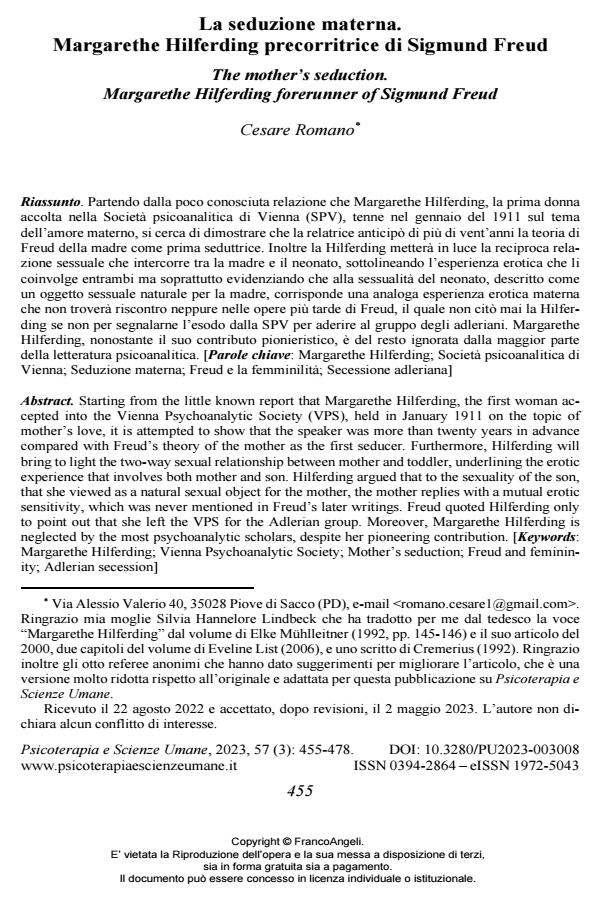La seduzione materna. Margarethe Hilferding precorritrice di Sigmund Freud
Titolo Rivista PSICOTERAPIA E SCIENZE UMANE
Autori/Curatori Cesare Romano
Anno di pubblicazione 2023 Fascicolo 2023/3
Lingua Italiano Numero pagine 24 P. 455-478 Dimensione file 118 KB
DOI 10.3280/PU2023-003008
Il DOI è il codice a barre della proprietà intellettuale: per saperne di più
clicca qui
Qui sotto puoi vedere in anteprima la prima pagina di questo articolo.
Se questo articolo ti interessa, lo puoi acquistare (e scaricare in formato pdf) seguendo le facili indicazioni per acquistare il download credit. Acquista Download Credits per scaricare questo Articolo in formato PDF

FrancoAngeli è membro della Publishers International Linking Association, Inc (PILA)associazione indipendente e non profit per facilitare (attraverso i servizi tecnologici implementati da CrossRef.org) l’accesso degli studiosi ai contenuti digitali nelle pubblicazioni professionali e scientifiche
Partendo dalla poco conosciuta relazione che Margarethe Hilferding, la prima donna accolta nella Società psicoanalitica di Vienna (SPV), tenne nel gennaio del 1911 sul tema dell’amore materno, si cerca di dimostrare che la relatrice anticipò di più di vent’anni la teoria di Freud della madre come prima seduttrice. Inoltre la Hilferding metterà in luce la reciproca rela- zione sessuale che intercorre tra la madre e il neonato, sottolineando l’esperienza erotica che li coinvolge entrambi ma soprattutto evidenziando che alla sessualità del neonato, descritto come un oggetto sessuale naturale per la madre, corrisponde una analoga esperienza erotica materna che non troverà riscontro neppure nelle opere più tarde di Freud, il quale non citò mai la Hilfer- ding se non per segnalarne l’esodo dalla SPV per aderire al gruppo degli adleriani. Margarethe Hilferding, nonostante il suo contributo pionieristico, è del resto ignorata dalla maggior parte della letteratura psicoanalitica.
Parole chiave:Margarethe Hilferding; Società psicoanalitica di Vienna; Seduzione materna; Freud e la femminilità; Secessione adleriana
Cesare Romano, La seduzione materna. Margarethe Hilferding precorritrice di Sigmund Freud in "PSICOTERAPIA E SCIENZE UMANE" 3/2023, pp 455-478, DOI: 10.3280/PU2023-003008